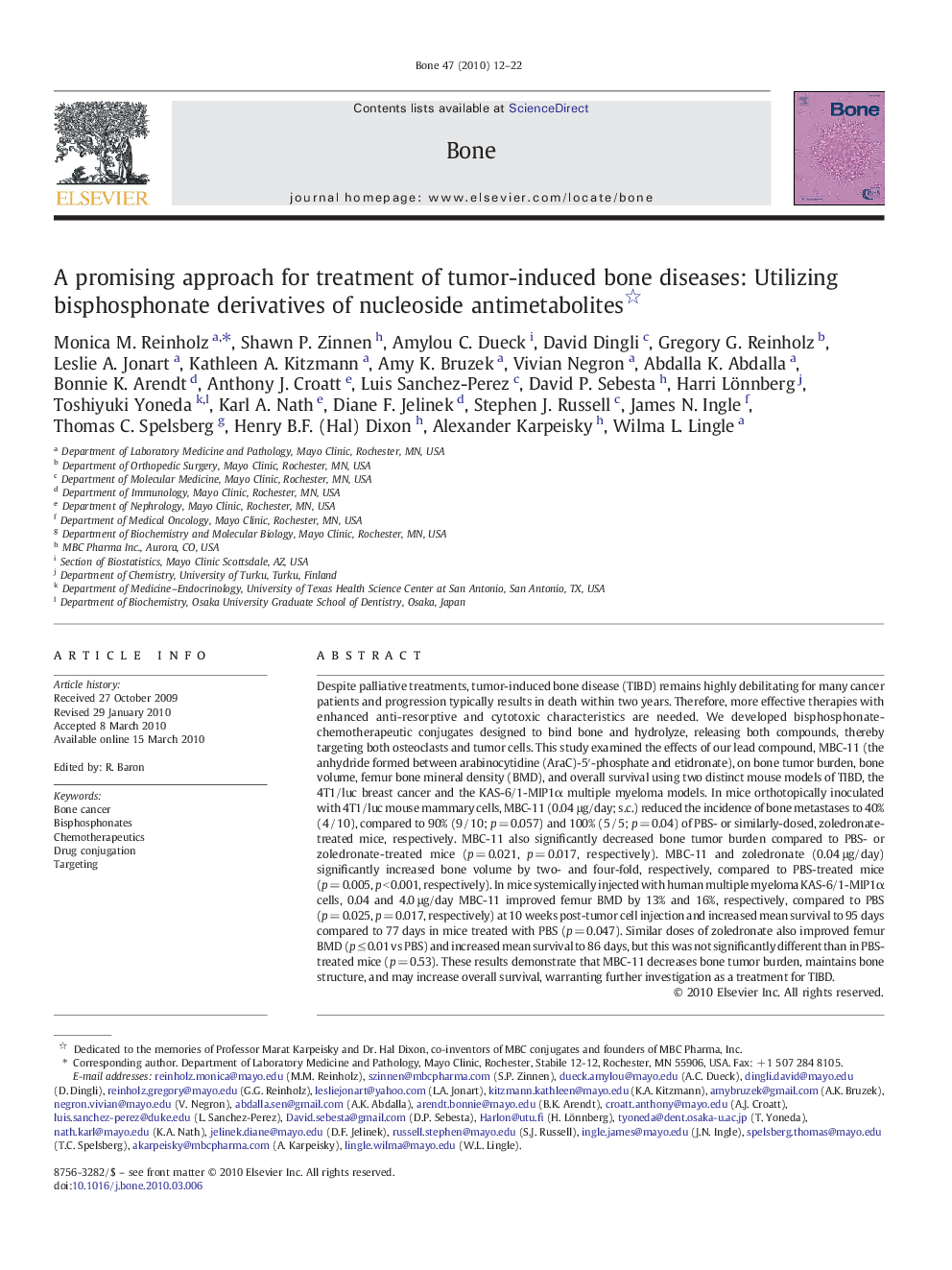| کد مقاله | کد نشریه | سال انتشار | مقاله انگلیسی | نسخه تمام متن |
|---|---|---|---|---|
| 2780855 | 1153308 | 2010 | 11 صفحه PDF | دانلود رایگان |

Despite palliative treatments, tumor-induced bone disease (TIBD) remains highly debilitating for many cancer patients and progression typically results in death within two years. Therefore, more effective therapies with enhanced anti-resorptive and cytotoxic characteristics are needed. We developed bisphosphonate-chemotherapeutic conjugates designed to bind bone and hydrolyze, releasing both compounds, thereby targeting both osteoclasts and tumor cells. This study examined the effects of our lead compound, MBC-11 (the anhydride formed between arabinocytidine (AraC)-5′-phosphate and etidronate), on bone tumor burden, bone volume, femur bone mineral density (BMD), and overall survival using two distinct mouse models of TIBD, the 4T1/luc breast cancer and the KAS-6/1-MIP1α multiple myeloma models. In mice orthotopically inoculated with 4T1/luc mouse mammary cells, MBC-11 (0.04 μg/day; s.c.) reduced the incidence of bone metastases to 40% (4 / 10), compared to 90% (9 / 10; p = 0.057) and 100% (5 / 5; p = 0.04) of PBS- or similarly-dosed, zoledronate-treated mice, respectively. MBC-11 also significantly decreased bone tumor burden compared to PBS- or zoledronate-treated mice (p = 0.021, p = 0.017, respectively). MBC-11 and zoledronate (0.04 μg/day) significantly increased bone volume by two- and four-fold, respectively, compared to PBS-treated mice (p = 0.005, p < 0.001, respectively). In mice systemically injected with human multiple myeloma KAS-6/1-MIP1α cells, 0.04 and 4.0 μg/day MBC-11 improved femur BMD by 13% and 16%, respectively, compared to PBS (p = 0.025, p = 0.017, respectively) at 10 weeks post-tumor cell injection and increased mean survival to 95 days compared to 77 days in mice treated with PBS (p = 0.047). Similar doses of zoledronate also improved femur BMD (p ≤ 0.01 vs PBS) and increased mean survival to 86 days, but this was not significantly different than in PBS-treated mice (p = 0.53). These results demonstrate that MBC-11 decreases bone tumor burden, maintains bone structure, and may increase overall survival, warranting further investigation as a treatment for TIBD.
Journal: Bone - Volume 47, Issue 1, July 2010, Pages 12–22